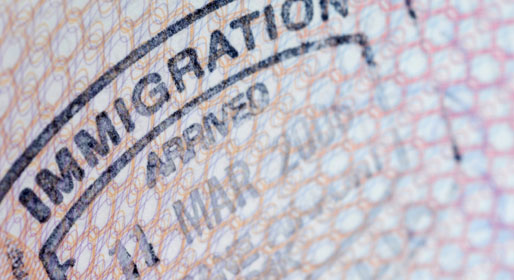Immigration Drives BC’s Labour Force Growth
By Jock Finlayson
Canada has a well-deserved reputation as an “immigrant-friendly” country. Each year, new immigrants amount to almost one per cent of the population, putting Canada near the top among advanced economies in the ratio of newcomers to population. In 2009, Canada welcomed 250,000 permanent immigrants and refugees. Last year, the figure rose to 280,000, despite a weak economy.
Since 2002, Canadian immigration policy has been based on the Immigration and Refugee Protection Act (IPRA). The Act delineates three categories of permanent immigration:
The family class is composed of foreign nationals sponsored by close relatives already in Canada.
Economic immigrants are selected for their skills and/or ability to contribute to the economy. Included in this category are skilled workers, business and investor immigrants, and provincial “nominees” who arrive via the provisions of provincial government programs geared to fast-tracking immigration for specific workers. In 2009, 12,000 immigrants (plus a larger number of accompanying spouses/dependents) came to Canada through provincial nominee programs (including one run by the BC government), which have become an important component of the overall immigration system.
Finally, there are refugees, who typically account for 9-10% of all permanent newcomers to Canada each year.
Since the mid-1980s, there has been a shift towards “economic” immigrants: these now comprise approximately three-fifths of the total, up from 30% a quarter century ago. It is worth noting, however, that more than half of all immigrants classified as “economic” actually come as spouses and dependents of the principal applicants, and it’s unclear to what extent such individuals participate in the labour market. For this reason, the figures often cited for “economic immigrants” can be misleading as an indicator of the additional labour supply that this group represents.
Immigration Drives BC’s Population and Labour Force Growth
By any measure, immigration is an increasingly important fact of life in British Columbia. More than one-quarter of the province’s population consists of people born outside of Canada; in the Lower Mainland the share exceeds 40%. Both of these figures are set to climb in the years ahead, as immigration continues to be the predominant source of population growth for both BC and Metro Vancouver.
In 2010, slightly more than 44,000 permanent immigrants settled in BC, up from 41,400 in 2009. British Columbia ranks as the third largest immigrant-receiving provinces, after Ontario and Quebec. In recent years, the breakdown of new permanent residents settling in BC is roughly as follows:
- Family class – 30% of the total.
- Economic immigration – 63%.
- Refugees – 4%.
- Other – 3%.
The above figures exclude temporary foreign workers (TFWs) — non-permanent residents permitted to enter Canada to fill specific job openings for a defined period of time. The TFW program is a federal initiative that has expanded over the past several years, in response to employer demands. In 2010, 283,000 TFWs were working in Canada, almost triple the number a decade earlier. In BC, the stock of TFWs amounts to 68,000, which equals about 3% of the total labour force. About half of the TFWs in the province reside in regions outside of Greater Vancouver.
Some politicians and union leaders have criticized the growing use of the TFW program by Canadian employers. But for a number of industries the program has been a very useful way to augment the supply of workers with particular skills and experience, including in communities where the existing labour force doesn’t have the required competencies or isn’t interested in the type of work available. It would make sense for the federal government to look more closely at TFWs who gain Canadian experience as a potential source of permanent immigration.
Immigrants, on average, are younger than the Canadian-born population, and also better educated – suggesting that immigration plays a role in boosting the supply of workers and in improving workforce skills. In 2009, almost half of all immigrants aged 25 years and older entering in BC held a university degree. Another 23% had some other form of post-secondary education or training.
Despite their seemingly high level of “human capital,” however, many newcomers have struggled to succeed in the economy and job market. The incidence of low-income, unemployment and under-employment is alarmingly high among immigrant cohorts arriving over the past 10-20 years. Studies by Statistics Canada and independent researchers highlight poor language skills and the difficulty of assessing foreign educational credentials as reasons why it is taking immigrants longer to “catch up” to the native-born population on measures of labour market performance.
Another contributing factor is that most local employers tend to attach little value to non-Canadian work experience. This poses an obvious problem for many immigrants, since almost by definition they arrive in Canada without such experience. Employers’ approaches to evaluating the skills and qualifications of newcomers will have to change, as labour shortages become more common and immigrants continue to occupy a larger place in our population and labour force.
Jock Finlayson is the Executive Vice President of the Business Council of BC.
PeopleTalk: Summer 2011










